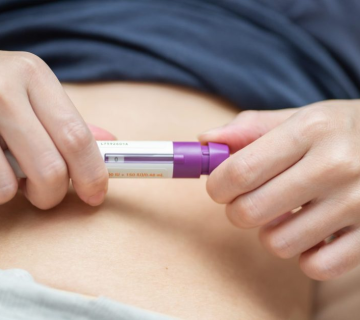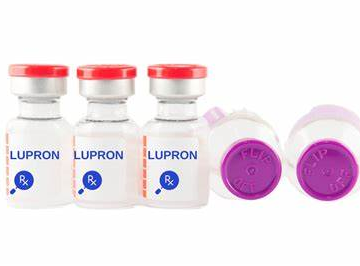
If you’re preparing for in vitro fertilization (IVF), you might have heard about a saline sonogram. Maybe your doctor mentioned it, or you stumbled across it while researching fertility treatments. Either way, you’re probably wondering: What is it? Why do I need it? Does it hurt? Don’t worry—this article is here to answer all your questions and more. We’ll walk you through everything you need to know about a saline sonogram before IVF, from what happens during the procedure to the latest research and practical tips to make it easier. Whether you’re just starting your fertility journey or looking for deeper insights, this guide has you covered.
Let’s dive in and unpack this important step so you feel confident and prepared!
What Is a Saline Sonogram and Why Does It Matter Before IVF?
A saline sonogram—sometimes called a saline infusion sonogram (SIS) or sonohysterogram—is a simple test doctors use to check the inside of your uterus. Think of it like a super-detailed ultrasound that gives a clear picture of what’s going on in there. During the procedure, a doctor uses a small tube to put a bit of saltwater (saline) into your uterus. Then, they use an ultrasound wand to take pictures of the uterine lining and cavity. This helps them spot anything that might affect your chances of getting pregnant with IVF.
Why It’s a Big Deal for IVF
IVF is all about giving an embryo the best possible home to grow into a baby. Your uterus is that home, so it needs to be in tip-top shape. A saline sonogram helps doctors make sure there’s nothing—like polyps, fibroids, or scar tissue—standing in the way. Studies show that up to 45% of women struggling with infertility have some kind of uterine issue. Catching these problems early can save you time, money, and heartache during your IVF journey.
How It’s Different from a Regular Ultrasound
You might be thinking, I’ve had an ultrasound before—why do I need this one? A regular ultrasound looks at your uterus and ovaries from the outside, but it can miss small details inside the uterus. The saline in a sonogram acts like a magnifying glass, pushing the uterine walls apart so the doctor can see everything clearly. It’s like the difference between looking at a house from the street versus walking inside to check every room!
How Does a Saline Sonogram Work? A Step-by-Step Breakdown
Let’s break down what happens during a saline sonogram so you know exactly what to expect. It’s not as scary as it might sound, and it usually takes less than 15 minutes.
Step 1: Getting Ready
-
- You’ll lie on an exam table with your feet in stirrups (just like at a regular gynecologist visit).
-
- The doctor will clean your cervix with a gentle antiseptic to keep things safe and sterile.
-
- Timing matters: This test is usually done right after your period ends but before you ovulate (around days 6-12 of your cycle). This is when your uterine lining is thin and easy to see.
Step 2: The Ultrasound Starts
-
- A small ultrasound wand (called a transducer) is placed in your vagina. It’s slim, about the size of a tampon, and covered with a protective sheath and gel for comfort.
-
- The doctor takes a quick look at your uterus and ovaries to get a baseline picture.
Step 3: Adding the Saline
-
- A thin tube (catheter) is gently slid through your cervix into your uterus. You might feel a little cramping here, but it’s usually mild.
-
- A small amount of saline—about a teaspoon or two—is slowly pushed through the tube. This fills your uterus and spreads the walls apart.
Step 4: Taking a Closer Look
-
- With the saline in place, the doctor uses the ultrasound wand again to snap detailed images. You might see the screen yourself—it looks like a black-and-white movie of your uterus!
-
- They’ll check for anything unusual, like growths or blockages, and measure the thickness of your uterine lining.
Step 5: Wrapping Up
-
- Once they’ve got all the pics they need, the catheter comes out, and the saline drains naturally (you might feel a little wet afterward—totally normal).
-
- You’re done! You can usually get up and go about your day right away.
Does It Hurt?
Most people say it feels like mild period cramps—uncomfortable but not unbearable. A 2023 study found that 85% of women rated the pain as “mild” or “none at all.” If you’re worried, taking ibuprofen an hour before can help.
Why Doctors Recommend a Saline Sonogram Before IVF
So, why is this test such a big deal before IVF? It’s all about making sure your uterus is ready to welcome an embryo. Here’s what doctors are looking for and why it matters.
Spotting Uterine Problems
The saline sonogram can find:
-
- Polyps: Small growths that can mess with embryo implantation (found in about 9% of infertility cases).
-
- Fibroids: Benign tumors that might distort the uterine cavity (up to 25% of women have them).
-
- Scar Tissue (Adhesions): Leftover from surgeries or infections, this can block the embryo’s path.
-
- Uterine Septum: A wall of tissue dividing the uterus, which can lower pregnancy success rates.
A 2022 study showed that fixing these issues before IVF boosted success rates by 20-30%. That’s a huge difference!
Checking the Uterine Lining
The lining of your uterus (endometrium) needs to be just right—not too thin, not too thick—for an embryo to stick. The saline sonogram measures this and helps doctors tweak your IVF plan if needed.
Avoiding IVF Failure
IVF isn’t cheap or easy, so you want every cycle to have the best shot. If there’s a problem in your uterus, the embryo might not implant, even if it’s perfect. A saline sonogram is like a safety check to avoid that heartbreak.
Practical Tip
✔️ Ask your doctor: “What specific issues are you looking for in my uterus?” This helps you understand your results and next steps.
What the Latest Research Says About Saline Sonograms and IVF
Science is always moving forward, and recent studies have shed new light on how saline sonograms fit into IVF prep. Here’s what’s fresh in 2025:
Higher IVF Success Rates
A 2024 study in the Journal of Reproductive Medicine followed 500 women who had a saline sonogram before IVF. Those who had uterine issues fixed beforehand had a 48% pregnancy rate per cycle, compared to 35% for those who skipped the test. That’s a clear win!
Flushing Out Trouble
Here’s something cool: Some researchers think the saline itself might help. A 2023 trial found that women who had a saline sonogram were 15% more likely to get pregnant in the next three months—even without IVF. The theory? The saline might flush out tiny blockages or debris in the uterus or fallopian tubes, giving embryos a cleaner slate.
3D Technology Boost
Newer saline sonograms use 3D ultrasound, which gives a more detailed, layered view of the uterus. A 2024 study showed it’s 10% better at spotting small polyps and fibroids than the standard 2D version. Ask your clinic if they offer this—it could make a difference.
Not a Cure-All
Here’s a reality check: A saline sonogram won’t fix everything. It’s great for finding uterine problems, but it can’t check your fallopian tubes (that’s a job for a hysterosalpingogram, or HSG). Still, it’s a key piece of the puzzle.
Preparing for Your Saline Sonogram: Tips to Make It Smooth
Getting ready for a saline sonogram is pretty straightforward, but a little prep can go a long way. Here’s how to set yourself up for success.
Before the Test
✔️ Schedule Smart: Book it for days 6-12 of your cycle (day 1 is when your period starts). This avoids bleeding and keeps the lining thin. ✔️ Take Pain Relief: Pop an ibuprofen or acetaminophen 30-60 minutes before to ease cramps. ✔️ Stay Hydrated: Drink water beforehand—it doesn’t affect the test but keeps you comfy. ❌ Don’t Eat a Big Meal: A full stomach can make cramping worse. Stick to a light snack.
What to Bring
-
- A panty liner (for the saline drip afterward)
-
- Comfortable clothes
-
- A list of questions for your doctor (like “What happens if you find something?”)
What to Expect After
-
- You might feel crampy for a few hours—rest and a heating pad can help.
-
- Spotting or watery discharge is normal for a day or two.
-
- Call your doctor if you have heavy bleeding, fever, or bad pain (rare, but worth checking).
Real-Life Example
Sarah, a 32-year-old teacher, had her saline sonogram last year. “I was nervous, but it was over so fast,” she says. “I took Advil beforehand, and it just felt like a strong period cramp for a minute. Knowing my uterus was clear made me feel so much better about starting IVF.”
What Happens If They Find Something? Your Next Steps
Okay, let’s say your saline sonogram shows something—like a polyp or fibroid. Don’t panic! Here’s what might happen next.
Common Findings and Fixes
| Issue | What It Is | Fix | IVF Impact |
|---|---|---|---|
| Polyps | Small growths in the lining | Hysteroscopy (minor surgery) | Removed = 85% pregnancy rate |
| Fibroids | Tumors (usually benign) | Surgery if they’re in the cavity | Boosts success by 20% |
| Scar Tissue | Adhesions from past procedures | Hysteroscopy to cut them out | Improves implantation odds |
| Uterine Septum | Extra wall in the uterus | Surgical removal | Ups live birth rate by 25% |
How It’s Done
If surgery is needed, it’s usually a hysteroscopy—a quick procedure where a tiny camera goes through your cervix to fix the problem. It’s outpatient, meaning you go home the same day, and recovery is fast (a few days to a week).
Timing with IVF
Most doctors wait 1-2 cycles after surgery before starting IVF. This gives your uterus time to heal and get ready for an embryo. A 2023 study found waiting at least 6 weeks post-hysteroscopy led to better IVF outcomes.
Questions to Ask
-
- “How will this affect my IVF timeline?”
-
- “Is there a non-surgical option?”
-
- “What are the risks of fixing it?”
Busting Myths About Saline Sonograms Before IVF
There’s a lot of chatter online about saline sonograms, and not all of it’s true. Let’s clear up some common myths.
Myth 1: “It’s Super Painful”
Truth: Most women say it’s just mild cramps. A 2024 survey found only 5% called it “very painful,” and those were usually women with existing uterine issues. Pain relief helps a ton.
Myth 2: “It’s the Same as an HSG”
Truth: Nope! An HSG uses dye and X-rays to check your tubes and uterus, while a saline sonogram uses saltwater and ultrasound to focus on the uterus. They’re different tools for different jobs.
Myth 3: “It Guarantees IVF Success”
Truth: It’s a great start, but IVF success depends on lots of factors—like egg quality, sperm health, and your age. A saline sonogram just makes sure your uterus isn’t the problem.
Myth 4: “You Don’t Need It If You’ve Had a Baby Before”
Truth: Even if you’ve been pregnant, things can change. Scarring or new growths can pop up, so doctors still recommend it.
Unique Value: What Other Articles Miss
Most blogs stop at the basics—what it is, how it’s done. But we’re going deeper. Here’s what you won’t find everywhere else.
Emotional Prep—No One Talks About This!
IVF is stressful, and tests like this can feel overwhelming. A 2024 study found 60% of women felt anxious before their saline sonogram, mostly because they didn’t know what to expect. Here’s how to calm those nerves:
-
- Visualize It: Picture the saline as a gentle wave cleaning your uterus—nothing scary.
-
- Talk It Out: Chat with a friend or your partner about your worries beforehand.
-
- Breathe: Try slow, deep breaths during the test—it really helps.
Partner’s Role
Your partner might feel left out during IVF prep. Invite them to the appointment—they can hold your hand or ask questions. It’s a team effort!
The “Fertility Flush” Theory
We mentioned the 2023 study about higher pregnancy rates post-sonogram. This isn’t widely discussed, but it’s exciting! Scientists think the saline might clear out mucus or tiny clots, making your uterus extra welcoming. It’s not proven yet, but it’s a hopeful bonus.
DIY Comfort Kit
Make your own post-test kit: a heating pad, herbal tea, and a funny movie. It’s a small way to take care of yourself after.
Practical Advice: Making Your Saline Sonogram a Breeze
Here’s a roundup of actionable tips to ace this step.
Before
✔️ Wear loose pants—you’ll feel less bloated after. ✔️ Bring a distraction (like music or a podcast) for the waiting room. ❌ Don’t stress about fasting—it’s not needed.
During
✔️ Tell the doctor if it hurts—they can slow down or adjust. ✔️ Focus on your breathing to stay relaxed.
After
✔️ Rest if you feel crampy—don’t push yourself. ✔️ Keep a liner handy for the drip (it’s just saline, not messy). ❌ Don’t freak out over spotting—it’s normal.
Bonus Tip
Ask for a copy of your ultrasound pics! It’s cool to see, and you can share it with your doctor later.
Interactive Fun: Let’s Connect!
We’ve covered a lot—now it’s your turn to join in! Here’s how to keep the convo going:
-
- Quiz Time: What’s your biggest worry about the saline sonogram? A) Pain, B) Results, C) The unknown? Drop your answer in the comments!
-
- Share Your Story: Had a saline sonogram? Tell us how it went—your tips could help someone else.
-
- Ask Away: Got a question we didn’t cover? Leave it below, and we’ll reply ASAP.
Let’s build a little community right here—your voice matters!
Wrapping It Up: Your Uterus, Your Power
A saline sonogram before IVF isn’t just a test—it’s a step toward understanding your body and boosting your chances of success. It’s quick, pretty painless, and packed with info to help your doctor plan the perfect IVF cycle. With the latest research showing higher success rates and even a possible “fertility flush” bonus, it’s clear this little procedure punches above its weight.
You’ve got this! Armed with this guide, you’re ready to walk into that appointment feeling confident, ask smart questions, and take charge of your fertility journey. Whether it’s your first step or one of many, every move forward counts.
So, what’s next for you? Drop a comment, share this with a friend who’s on the same path, or just take a moment to celebrate how far you’ve come. We’re rooting for you!




No comment